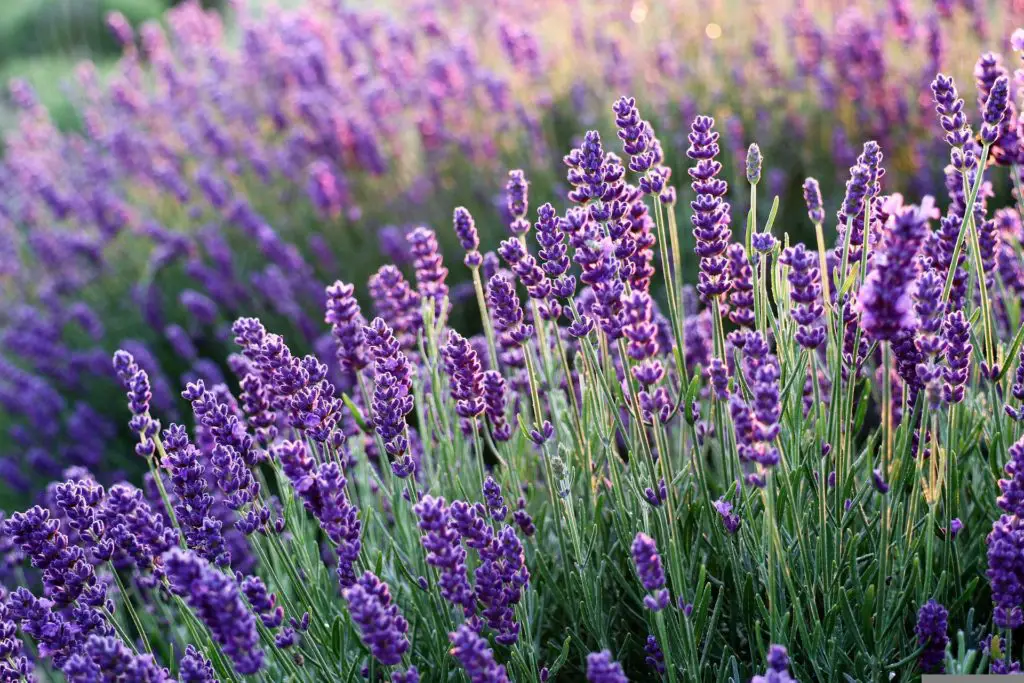There are more than 30 species of snakes in the region I live in. Since our yard backs up to a dense forested patch with lots of wildlife, I’m typically very aware of accidentally stumbling onto a snake habitat or hiding place. A friend mentioned hearing once that lavender plants could attract snakes. Or was it that lavender plants could repel snakes? She couldn’t really remember but felt sure there was some connection between the two.
Do Lavender Plants Attract Snakes or Repel Them?
Lavender plants do not attract snakes. In fact, some may say that lavender plants actually repel snakes from your yard or garden. There are several personal anecdotes in articles and blogs on the internet about lavender plants repelling snakes, however, no conclusive evidence or trustworthy sources to back that claim up.

Snakes seek out cool areas with ample cover or protection. This could include piles of leaves, low flowering plants, brush, or other groundcovers. With its upward shoots, lavender does not fit this description.
Snakes also hang out in areas that attract their food sources, which include rodents, slugs, and snails to name a few. If I had to guess where the anecdotal advice on the internet came from, I suspect that it originates from the fact that the smell of the oils in lavender plants are known rodent repellents. If a plant could decrease rodent populations in your yard, it makes sense that it could, in turn, slightly reduce your snake population. However, this seems too loose a correlation to invest any time planting and caring for lavender plants if your goal was to either attract or repel snakes.
What Types of Environments Attract Snakes?
Snakes tend to rest in areas that serve as good hiding places. Snakes are also unable to internally control their temperature, so they seek environments that help them do so. Their behavior is often dictated by this need to find a suitable temperature.
During hot months, they like the dark and cool cover of woodpiles, piles of damp leaves, rockpiles, or tall grasses. Most snake species also like wet environments, like puddles and moist or slimy areas. During cool winter months, snakes are more likely to find sunny areas with higher temperatures or seek warmer shelter. I have often heard of people finding them snuggled up to an appliance that is generating warmth, like a deep freezer or a hot water heater.
During rainy periods when worms, snails, and slugs are more visible, snake population may increase as they seek these animals for food.
How Can You Repel Snakes?
Keeping your yard free of the snake-prone environments described above will help deter snakes from hanging around. Remove objects that could shelter snakes, mow tall grass, and clear debris piles.
You can also reduce your snake population by keeping mice, rats, and other rodents that serve as prey out of your yard. Clean up any edible substances in your yard, garage or the exterior of your home. This could include transferring open pet food, bird seed, or food scraps to closed containers with lids that are not accessible by rodents.
Most of the snakes in my area are non-venomous. However, the prevalence of three species that are exceptions to this are enough to make me cautious. If you live in a rural area where you know venomous snakes are present, it is a good idea to keep a snake bite kit in your home.
If you encounter a snake, you can remove it with a shovel and a bucket with a lid – so long as you know it is not venomous, in which case you should not attempt to handle it. Use the shovel to “scoop” it up and sweep it into a bucket that is overturned on its side. Deposit the snake in a wooded area, rather than in your municipal trash can. This creates a potential hazard for the maintenance workers responsible for clearing your trash.
What Animals Do Lavender Plants Attract?
While lavender plants do not attract snakes, they do attract other animals. Bees, for instance, love lavender for its pollen and its nectar. Other animals that are attracted to lavender include raccoons, butterflies and moths, hummingbirds, caterpillars, ladybugs, and other insects.
I have read that lavender plants repel rodents; however, I have not found this to be true in my own backyard. The chipmunks and mice living in the retaining walls near my herb garden do not eat our lavender, but their population seems just as resilient as it was before I planted the lavender. If there is a plant that you want to protect from rodents, it might be worth a try to plant lavender next to it.
What are Ideal Growing Conditions for Lavender?
Lavender grows well in nearly all growing regions of the U.S. If planting outdoors, you will want to select a site with six to eight hours of full sun and well-drained soil. Space lavender plants 12 to 18 inches apart from one another, as they become shrubby as they mature.
Because lavender is so heat tolerant, it is an excellent choice for hot and dry climates. Plant lavender in the spring once the winter frosts have ended. If you live in an area with high rainfalls, you may want to try growing lavender in a pot where moisture levels can be better controlled and water can drain more effectively.
What Other Benefits Does Lavender Have?
Lavender is a perennial herb that can easily be grown at home in outdoor settings or even indoors in pots to add color and fragrance to a room. Its height and color make it an excellent choice to line the edge of walkways. When dried, it can be used in bouquets, to make tea, or as culinary decoration. There are also numerous resources on the internet to learn how to harvest essential oils for cooking, tinctures, or perfume.
Many people believe the scent of lavender promotes relaxation. Using the plant in tea also has medical benefits, like reducing inflammation, improving sleep, and supporting digestive and respiratory health.
